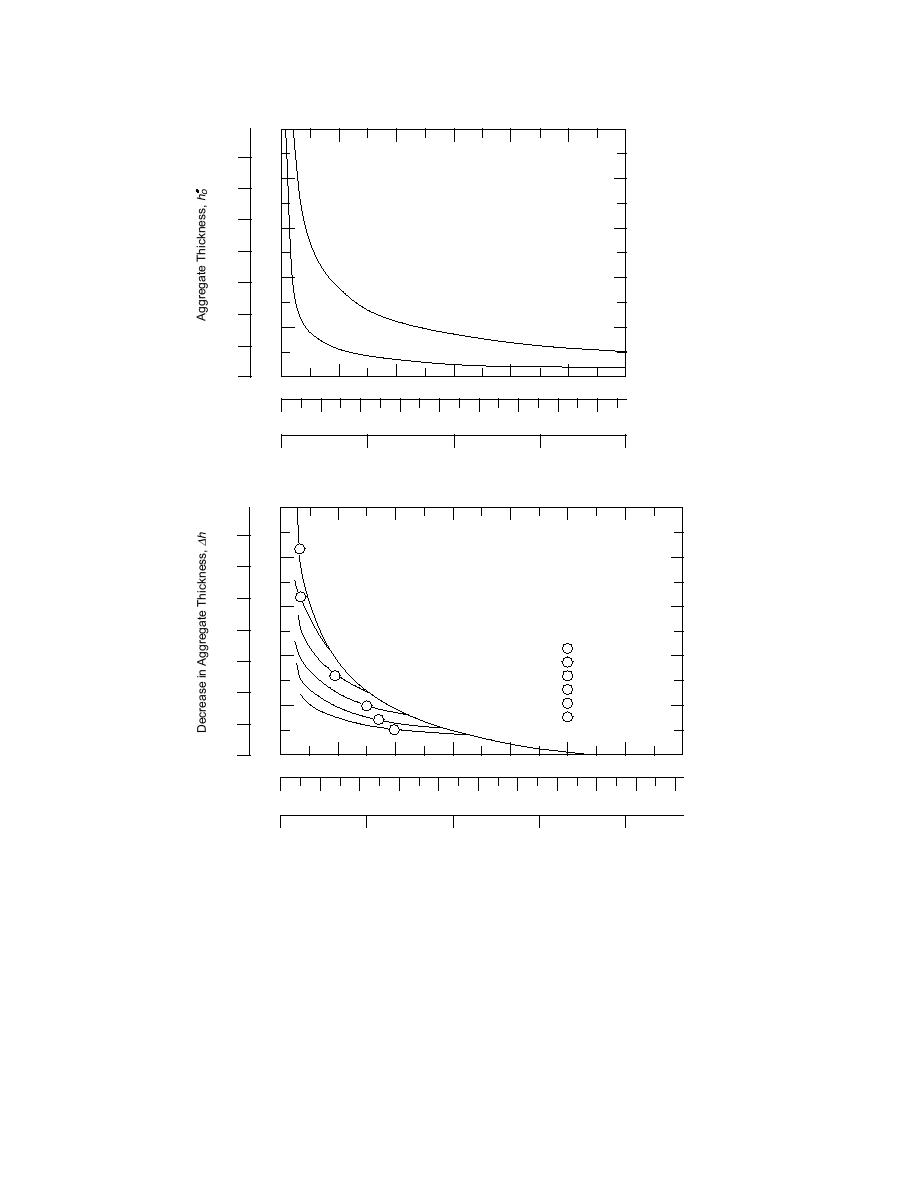m
in.
1.0
35
Axle Load = 80 kN (18,000 lb)
0.8
Rut Depth = 0.3 m (12 in.)
30
Tire Pressure = 480 kPa (70 psi)
25
0.6
20
0.4
15
10
N = 100
0.2
5
N = 10
0
0
0
20
40
60
80
100
120 kPa
UndrainedShear
Strength 0
2
4
6
8
10
12
14
16
psi
CBR
KH-78
0
1
2
3
4
m
in.
1.0
35
Axle Load = 80 kN (18,000 lb)
1
0.8
Rut Depth = 0.3 m (12 in.)
30
Tire Pressure = 480 kPa (70 psi)
2
25
0.6
20
K = 450 kN/m
1
0.4
15
K = 400 kN/m
2
K = 300 kN/m
3
3
K = 200 kN/m
4
10
K = 100 kN/m
5
0.2
4
K = 10 kN/m
6
5
5
6
0
0
0
20
40
60
80
100
120
140 kPa
Undrained Shear
Strength 0
16
18
0
1
Figure 6. Aggregate thickness, ho′ (top), and reduction of aggregate thickness, ∆h (bottom),
resulting from use of geotextile as a function of soil cohesion for 12-in. rut depth. N is num-
ber of vehicle passes and K is tensile modulus of geotextile. (From Giroud and Noiray 1981.)
expected (e.g., Barenberg et al. 1975, Giroud and
2. Enter the bottom chart in Figure 6 with a soil
Noiray 1981).
cohesion value of 52 kPa, for 100 vehicle passes,
and for a geotextile with K = 100 kN/m and de-
1. Enter the top chart in Figure 6 with a soil cohe-
termine that the reduction in aggregate thick-
ness ∆h allowed is 0.12 m (5 in.). Thus, the ag-
sion value, c, of 52 kPa, for 100 vehicle passes
and determine that ho′ is 0.20 m (8 in.) of aggre-
gregate thickness theoretically allowed when a
gate required without a geotextile.
geotextile is used is 0.06 m (3 in.). However, the
7





 Previous Page
Previous Page
